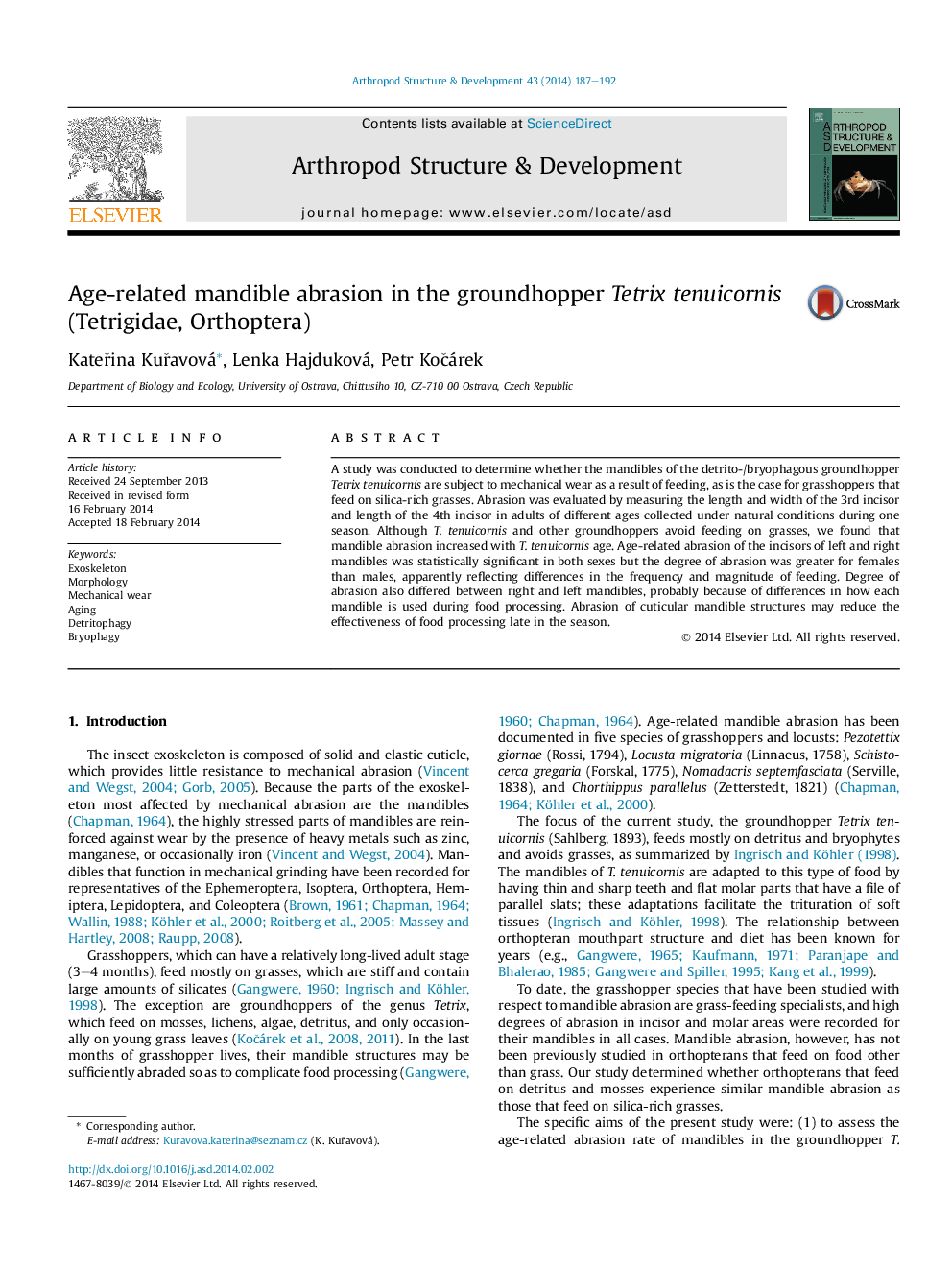| Article ID | Journal | Published Year | Pages | File Type |
|---|---|---|---|---|
| 2778593 | Arthropod Structure & Development | 2014 | 6 Pages |
•Mandibles of detrito-/bryophagous groundhoppers mechanically wear during feeding.•Mandible abrasion increases with groundhopper age.•Degree of abrasion differs between sexes as a result of different behaviours.•Degree of abrasion differs between right and left mandibles due to different usage.
A study was conducted to determine whether the mandibles of the detrito-/bryophagous groundhopper Tetrix tenuicornis are subject to mechanical wear as a result of feeding, as is the case for grasshoppers that feed on silica-rich grasses. Abrasion was evaluated by measuring the length and width of the 3rd incisor and length of the 4th incisor in adults of different ages collected under natural conditions during one season. Although T. tenuicornis and other groundhoppers avoid feeding on grasses, we found that mandible abrasion increased with T. tenuicornis age. Age-related abrasion of the incisors of left and right mandibles was statistically significant in both sexes but the degree of abrasion was greater for females than males, apparently reflecting differences in the frequency and magnitude of feeding. Degree of abrasion also differed between right and left mandibles, probably because of differences in how each mandible is used during food processing. Abrasion of cuticular mandible structures may reduce the effectiveness of food processing late in the season.
Graphical abstractFigure optionsDownload full-size imageDownload as PowerPoint slide
